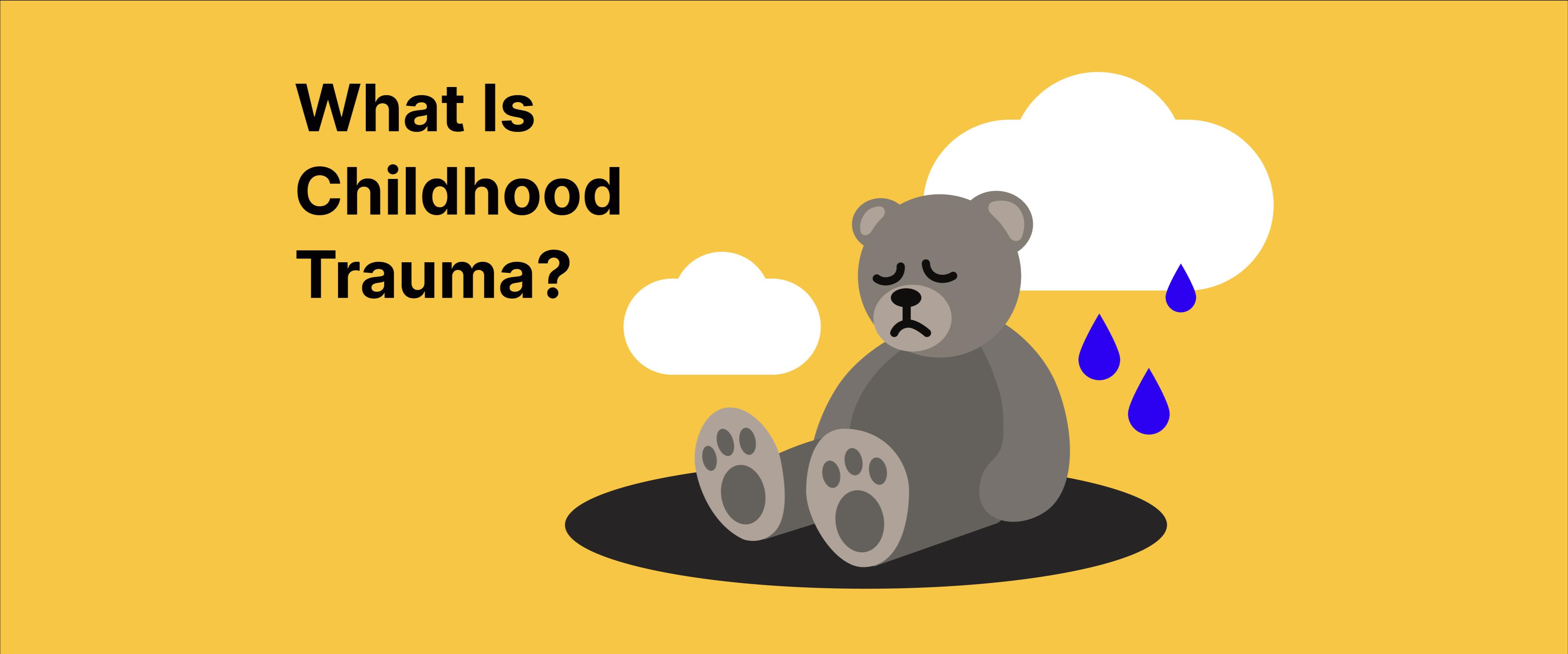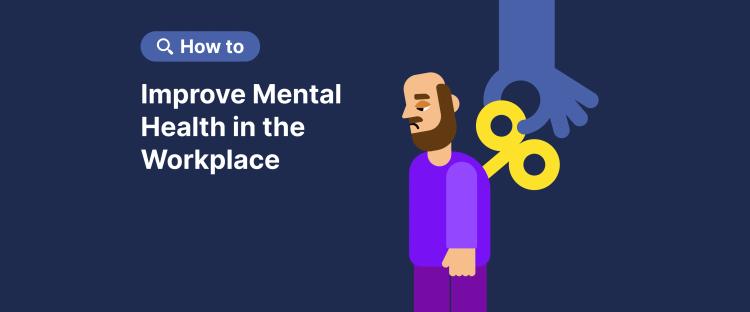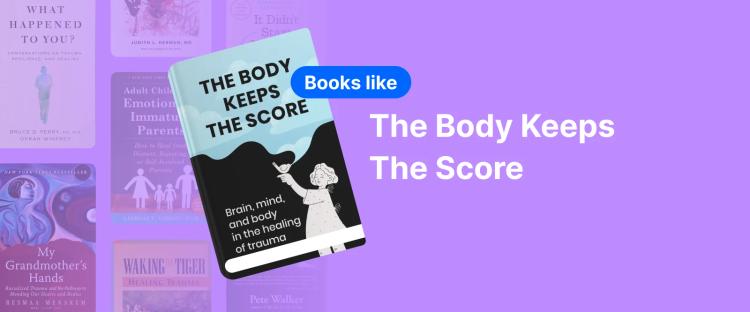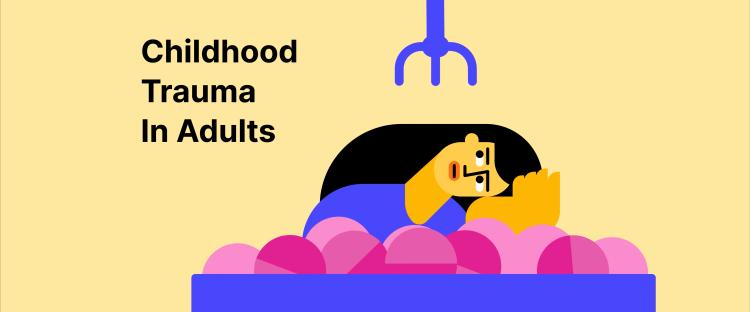Childhood trauma is an experience (or series of experiences) that overwhelms a child's capacity to cope. These traumatic events cause a child to feel unsafe, unsupported, or alone. These forms of child trauma, which often include child abuse or emotional abuse, especially when involving prolonged maltreatment, can leave invisible wounds that affect development long after the events themselves have passed.
They aren't just temporary, unpleasant experiences — their effects can last a lifetime. Trauma shapes how young people see themselves, others, the world, and their future.
The simplest definition of trauma I ever heard was "too much, too fast, too soon."
My name is Natalie Moore, I am an LMFT trauma therapist in California, and in this article, I will explain:
What childhood trauma is.
Types of trauma children experience.
Signs of unresolved trauma in adults.
How trauma affects health and daily life.
Treatment options and paths to healing.
What are traumatic events?
Traumatic events are experiences that are intensely distressing and overwhelming and elicit emotions such as fear, helplessness, and horror. These experiences threaten one's physical or emotional safety, such as abuse, neglect, accidents, natural disasters, medical procedures, and the sudden loss of a loved one.
As Gabor Maté, MD, explains in 'The Myth of Normal,' many traumas children experience are not rare or extreme but rather hidden in plain sight, woven into the environments we consider ordinary. His work challenges us to rethink what we define as a "normal" childhood and recognize the invisible wounds that can form even in seemingly functional families.
Experiencing trauma is one thing, but carrying its impact over time is another. When the emotional pain doesn't fade and instead alters a child's development, it can turn into something deeper: child traumatic stress.
Understanding the impact: What is child traumatic stress?

When trauma leaves a lasting emotional imprint, it becomes child traumatic stress. This refers to the symptoms and disruptions that follow a traumatic event.
Children of all ages, but especially young children, may experience:
Nightmares
Anxiety or mood swings
Trouble concentrating
Social withdrawal
Avoidance of triggers and stressors.
These effects can continue into adulthood if left unresolved. Over time, these symptoms can evolve into post-traumatic stress disorder (PTSD) or contribute to long-term mental health problems. Experts use "Three Es" to fully grasp how trauma takes root and shapes a child's future. This simple but powerful framework helps explain why two children can experience the same event and be affected differently.
The "Three Es" of trauma: Event, experience, effect
To better understand how trauma affects children, mental health professionals use the Three Es system:
Event – The event is the external occurrence that serves as the catalyst for the trauma. It could involve a specific incident such as violence, a medical procedure, or a natural disaster. The event is often the most objective element — think of it as what you'd observe if the incident were recorded on video.
Experience – This refers to how the individual internally experienced the event. It includes sensory input (sights, sounds, smells, tastes, touch, temperature, movement, physical sensations), emotions, bodily responses, thoughts, and beliefs that arose in the moment.
Effect – The effect refers to the lasting impact of the trauma. The effect may include changes in emotional regulation, mood, belief systems, behavior patterns, coping strategies, and sense of self-worth. The effect can show up immediately or emerge years later, especially in the case of unresolved or unrecognized trauma.
And that's where many adults find themselves struggling with symptoms they can't always trace back to childhood. Let's explore how unresolved trauma from the past can echo into adult life.
How childhood trauma affects adults

Assessing childhood trauma is challenging because adults often lack clear memories of traumatic events from childhood.
Additionally, complex trauma prevents memory formation as higher cortisol levels negatively impact the brain's ability to transform short-term memories into long-term ones.
Lastly, if the trauma occurred during the pre-verbal phase of childhood — called early childhood trauma — it can interfere with language acquisition and even impact brain development in lasting ways. As a result, an adult would lack the ability to put their trauma into words.
Therefore, identifying present-day patterns that indicate something likely occurred is more effective than relying on memory alone to assess childhood trauma.
Common signs of unresolved childhood trauma in adults
Wondering if you've been affected by trauma as a child? These symptoms may indicate your unresolved trauma:
Believing that you're unworthy of love or "not good enough"
Feeling like you're walking on eggshells around others
Hyperindependence (being overly self-reliant)
Unexplained medical issues
Feeling tense or on edge for no apparent reason
Challenges with emotional regulation
Hypervigilance (constantly scanning for threats)
Difficulty trusting people
Inability to connect with your emotions
People-pleasing behaviors
Insomnia or other sleep struggles
Difficulty focusing your attention
Rumination (repetitive thoughts that won't stop)
Attraction to partners who treat you poorly
Avoidance behaviors (substance use or distraction)
These patterns can interfere with your daily life, diminish your sense of well-being, and, in some cases, lead to issues like eating disorders.
For parents supporting children through emotional challenges, books like 'Battlefield of the Mind for Kids' by Joyce Meyer can offer a faith-based approach to building resilience, calming anxious thoughts, and fostering emotional strength from a young age.
Recognizing symptoms is a powerful first step. Now, let's go a little deeper.
Self-assessment: Questions to ask to check yourself for childhood trauma
Here are some reflective questions to help identify whether childhood trauma is impacting your current life:
Do you struggle with low self-worth?
Do you find it difficult to form close, trusting relationships with others?
Do you experience chronic guilt or shame even when you haven't done anything wrong?
Do you feel checked out or like you're just "going through the motions" of your life?
Do you feel that when things are going well, you're "waiting for the other shoe to drop?"
Do you minimize your needs and avoid conflict, even at the expense of your mental health?
Do you experience intense emotional reactions to situations where others seem unbothered?
If you've seen yourself in any of the signs or questions above, it may help to understand the different forms trauma can take. Trauma isn't always loud or obvious — sometimes, it's hidden in plain sight.
Types of childhood trauma
Trauma is not one-size-fits-all. Experts recognize various trauma types, many of which stem from direct threats like domestic violence or exposure to community violence. Here are the main categories:
Sexual trauma - Sexual trauma can result from any form of sexual abuse or non-consensual sexual interaction. Physical contact is not required for sexual abuse to occur. Inappropriate behaviors such as sexualized comments, grooming, exposure, or coercion can also cause lasting harm, especially in a child. Because children, be it young preschool children or preteens, cannot consent to sexual interactions, any sexual behavior involving a child is always abuse.
Physical trauma – Physical trauma occurs when a person experiences an injury or a direct threat of bodily harm. This type can result from accidents, natural disasters, physical abuse, interpersonal violence, or medical procedures. Even witnessing harm done to others can cause physical trauma.
Emotional and psychological trauma – This type of trauma is subjective and hard to define because what is emotionally traumatic to one person may not be to another. Emotional trauma stems from experiences in which a person feels unsafe, threatened, or coerced, even if no physical harm occurs.
Relational and developmental trauma – Relational trauma occurs within close relationships, often between a parent (or another caregiver) and a child. When we think of trauma, we usually recall acute events such as a fire or a car accident. Developmental trauma is ongoing and chronic, such as being constantly criticized by a parent, bullied at school, exposed to partner violence, or harassed as a teen. These traumas can be more challenging for therapy clients to identify as they were an ongoing part of their childhood experiences, as opposed to a discrete event.
Generational trauma – Generational trauma is inherited from previous generations and not directly experienced. For example, if a family has a legacy of unresolved loss or trauma, such as the effects of mental illness on a family member, future generations can experience the ripple effects from it. Intergenerational trauma passes down through dysfunctional family dynamics.
Collective and cultural trauma – Collective trauma can occur from shared traumatic events such as war, genocide, racism, displacement, or a pandemic. These cultural traumas can radically influence a person's identity and worldview. Examples of collective trauma for Americans include the 9/11 World Trade Center attacks and the COVID-19 pandemic.
We often think of trauma as purely emotional, but its effects aren't confined to the mind. Let's take a closer look at how trauma can also reshape the body and influence your physical health in profound ways.
Can trauma impact physical health?:
Trauma not only impacts mental health, but the effects of childhood trauma can have lasting effects on the body and contribute to serious health issues. A landmark study called the ACE (Adverse Childhood Experiences) Study [1] found that individuals who experienced neglect, childhood abuse, or major family dysfunction in childhood were at a significantly higher risk of developing physical maladies later in life. These include chronic illnesses such as heart disease, weakened immune systems, gastrointestinal issues, increased inflammation, and higher levels of stress hormones.

In 'The Body Keeps the Score,' psychiatrist Bessel van der Kolk explores how trauma imprints on the body and nervous system, often resulting in long-term physiological consequences. His research underscores the importance of addressing trauma not only through talk therapy but also through somatic and body-based interventions.
Treatment for childhood trauma
The good news is that trauma is treatable — you don't have to carry its weight for a lifetime. While trauma therapy continues to evolve with new research and approaches, talk therapy is not the only path to healing. Many people find relief through holistic, body-based practices that support regulation, reconnection, and emotional release.
Below are several non-therapy approaches that can support healing from childhood trauma:
Yoga, Tai Chi, and Other Movement-Based Practices – Mindful movement is a powerful way to literally and metaphorically move trauma out of the body. Practices like yoga and tai chi help individuals rebuild a sense of safety, agency, and connection with their bodies, shifting the experience of the body from one of fear to one of empowerment and pleasure.
Mindfulness and Meditation – Trauma disrupts the nervous system's ability to feel grounded and safe. Mindfulness — the practice of observing the present moment without judgment — and meditation can help retrain the brain and body to return to a calmer baseline. Over time, these practices can reduce hypervigilance and create more space for peace and presence.
Breathwork – Breathwork practices, such as Holotropic Breathwork, release tension and emotional energy stored in the body due to trauma. Participants often experience profound emotional release through crying, trembling, vocal expression, or altered states of consciousness as the body discharges what it has held onto for years.
Bodywork – Therapies such as massage, craniosacral therapy, acupuncture, and reiki offer a nonverbal route to healing. These approaches help individuals feel more at ease in their bodies and especially appeal to those who find talk-based approaches overwhelming or re-traumatizing. Bodywork can support regulation and increase a felt sense of safety.
Therapy options for childhood trauma
Here are four effective trauma-informed therapy approaches and a summary of how each one works to help resolve trauma:
Somatic Therapy – Somatic therapy views trauma as being stored in the nervous system through incomplete survival responses, such as fight, flight, or freeze, that were never fully resolved. Its goal is to help the body release or complete these stuck responses through body awareness, gentle movement, breathwork, and other body-based techniques. Because somatic approaches bypass the rational and verbal mind, they allow for healing that goes beyond talk therapy alone.
Eye Movement Desensitization and Reprocessing (EMDR) – This cutting-edge approach to trauma treatment uses a light bar or electronic tapping devices to create bilateral stimulation, stimulating the left and right hemispheres of the brain to process and integrate traumatic experiences. The therapist guides the client in either moving their eyes left to right repeatedly or holding electronic tapping devices that alternate vibrating in the left and right hands.
Internal Family Systems (IFS) – Internal Family Systems asserts that individuals have sub-personalities called "parts" that arise from life experiences. While some parts are useful and contribute to healthy behaviors, other parts (especially those that develop from traumatic experiences) can become over-protective, rigid, or self-destructive. One of the central tenets of IFS is that there are no "bad parts"; however, they need to be integrated into the system in a way that helps the parts work in harmony.
Trauma-Focused Cognitive Behavioral Therapy (TF-CBT) – TF-CBT is a structured therapy that helps the survivor tell the story of their trauma (their trauma narrative) in a safe, supported environment. TF-CBT starts by teaching the client emotional awareness and emotion regulation skills. The client is then guided in slowly writing or verbally sharing their trauma narrative with the therapist or a supportive person.
Trained healthcare providers and therapists use these evidence-based interventions to help trauma survivors reclaim their mental and physical health. They often integrate them within trauma-informed psychiatry to support both short-term relief and long-term emotional restructuring.
When to seek professional help:

If childhood trauma affects your ability to meaningfully engage in realms of life, such as your relationships, parenting, work, or school
If you cope with trauma triggers through avoidance behaviors such as substance abuse, self-harm, dissociation, workaholism, or avoiding people and places that remind you of the trauma
If the emotional effects of trauma cause dysregulation, mood instability, or poor self-worth
If you have chronic physical symptoms (such as migraines, brain fog, fatigue, or digestive issues) that a physiological issue cannot explain
If you are functioning well but childhood trauma is impacting your ability to enjoy your life or be present
For additional support and resources, visit the Substance Abuse and Mental Health Services Administration (SAMHSA) or the National Child Traumatic Stress Network (NCTSN). These two leading organizations are dedicated to research, education, and support for trauma survivors.
Learn more about childhood trauma with Headway
If you're short on time but eager to understand yourself better, the Headway app offers bite-sized book summaries that fit easily into your day. With 15-minute reads or listens, you can explore powerful insights on trauma, healing, and emotional resilience at your own pace, anytime, anywhere.
Start with summaries like 'The Body Keeps the Score' by Bessel van der Kolk or 'Battlefield of the Mind for Kids' by Joyce Meyer. Whether you're commuting, walking, or unwinding, Headway helps you make space for growth, even on your busiest days.
FAQs
What is childhood trauma? (With examples)
Childhood trauma refers to distressing or frightening events that overwhelm a child's ability to cope, often leaving lasting emotional or physical effects. Examples include:
Experiencing or witnessing domestic violence
Physical or emotional abuse
Neglect or abandonment
Severe illness or painful medical procedures
Loss of a caregiver or family member
Exposure to substance use disorders or parental addiction
Community violence or natural disasters
When children experience such events without adequate support, their brain and emotional development can be disrupted. Studies like The Adverse Childhood Experiences (ACE) Study show a strong link between childhood trauma and long-term health risks in adulthood.
What are the 4 types of childhood trauma?
While trauma can take many forms, mental health experts often group childhood trauma into four broad categories:
Physical trauma – resulting from injury or harm (accidents, physical abuse, or violent environments)
Emotional trauma – caused by persistent criticism, rejection, or witnessing emotionally intense situations
Sexual trauma – involving any unwanted or non-consensual sexual experience, including exposure or coercion
Neglect and developmental trauma – stemming from unmet needs, absence of care, or inconsistent attachment in early life
Each of these trauma types may be influenced by risk factors such as unstable home environments, poverty, and caregiver mental illness. Identifying these early is crucial to prevent compounding effects later in life.
What are the signs of emotional trauma in a child?
Signs of emotional trauma in children can be subtle or severe. These often include:
Sudden mood changes or emotional outbursts
Withdrawal from friends or family
Trouble sleeping or frequent nightmares
Regressive behaviors (bedwetting, thumb sucking)
Avoidance of certain people, places, or activities
Difficulties in concentration or learning
When children experience trauma, they may struggle to express it verbally. Instead, it often shows up in behavior or through physical symptoms. If untreated, emotional trauma can evolve into deeper mental health challenges or increase the risk of future issues like anxiety, depression, or substance use disorders.







